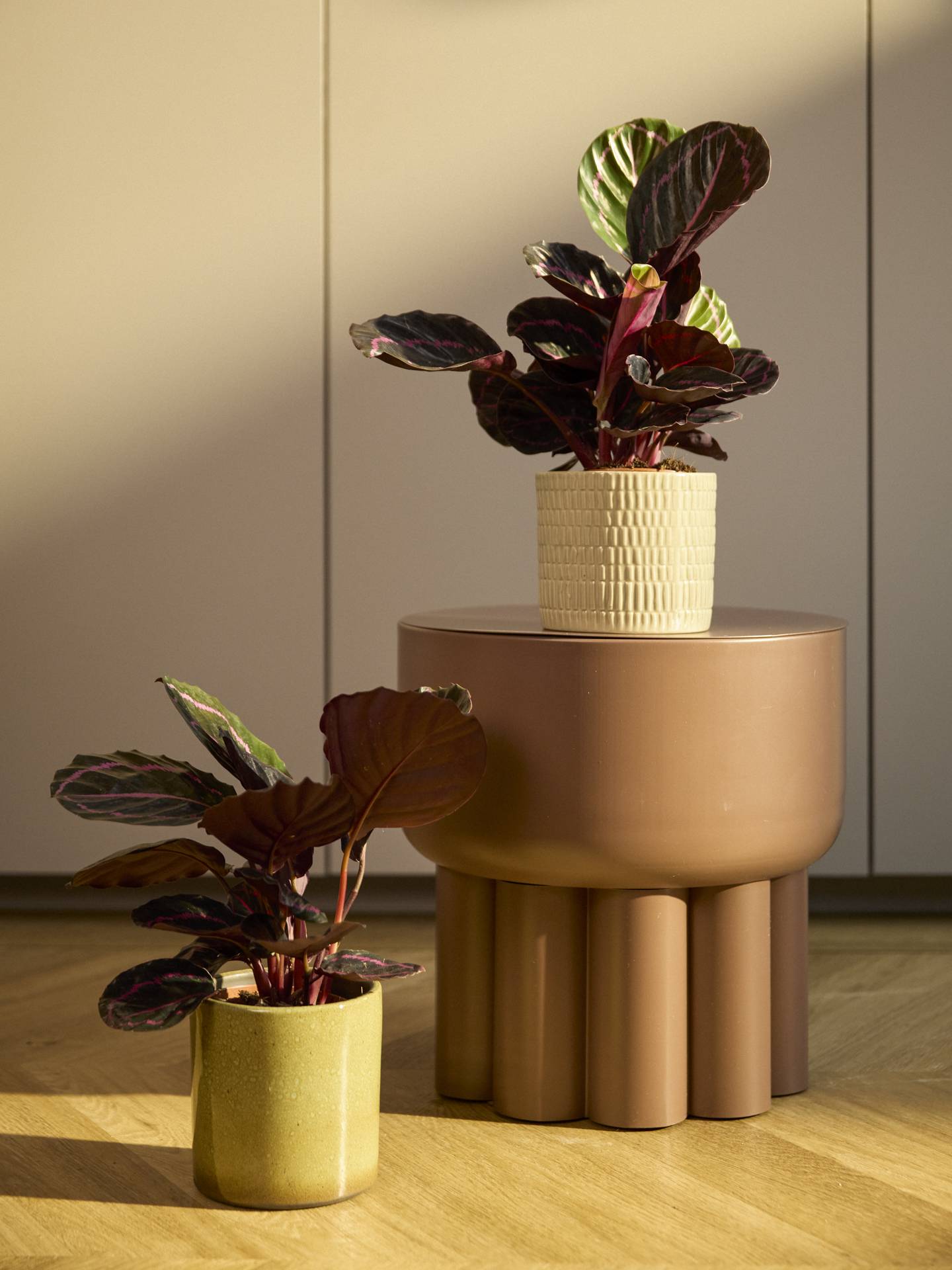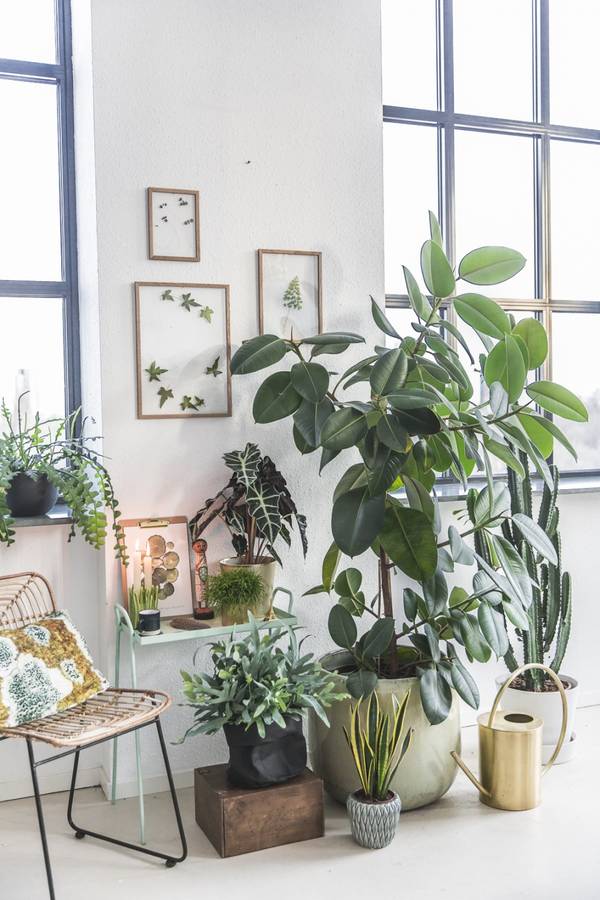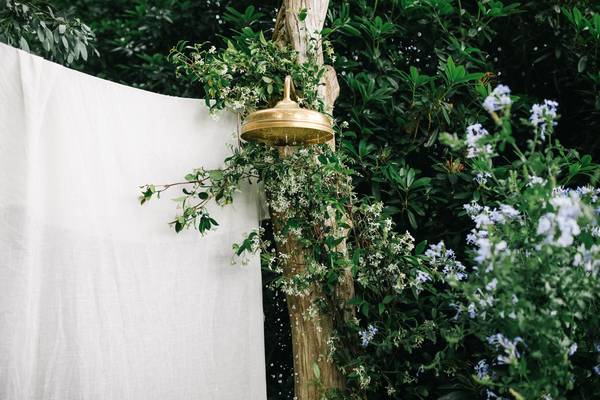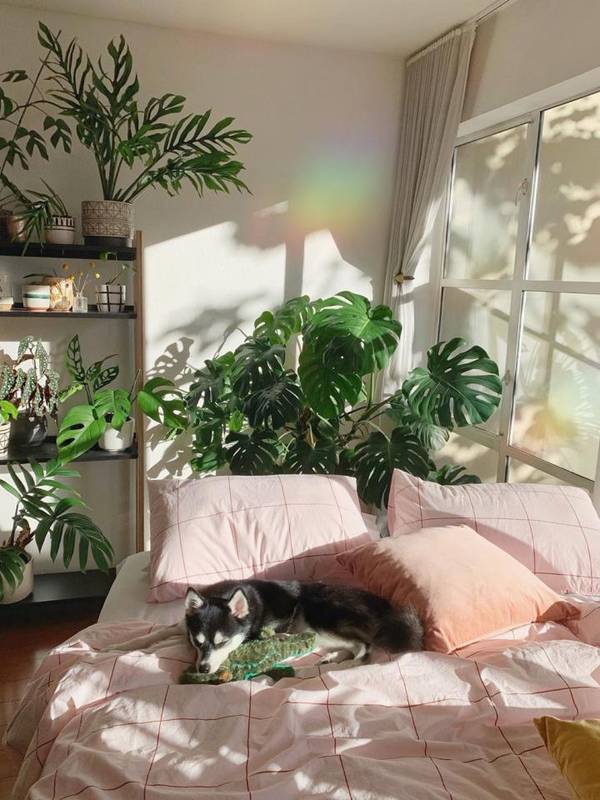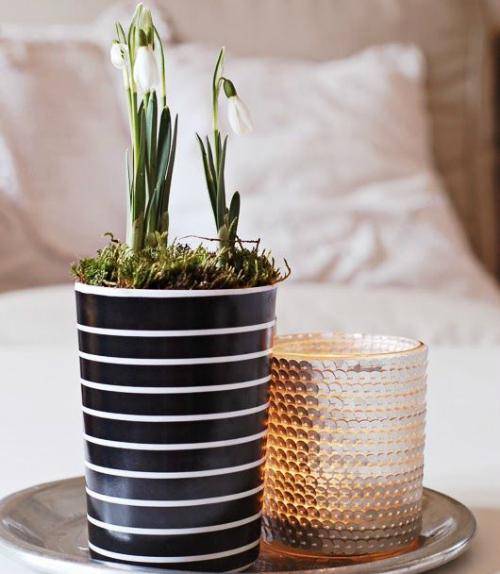
Calathea care
Calathea is a very versatile plant in terms of colour and shape, but unfortunately it can be a tricky plant to look after. Calatheas are sensitive, and the right ratio of light and water is very important for this houseplant. Do you dare take up the challenge? Check out these basic rules for plant care and see the tips below on caring for Calathea.
- Calathea is a fan of low or filtered sunlight. The plant prefers a spot in semi-shade or shade such as in front of a north-facing window, or a few metres from an east or west-facing window.
- Calatheas do not take well to draughts. Make sure not to place the plant too close to a frequently used door or open window.
- Calatheas can't take cold very well. Try not to let the temperature drop below 15°C. The ideal temperature is constant and around 20°C.
- Calatheas like high humidity and are therefore a good plant for the bathroom. To increase humidity, you can put some containers with water in the room you're keeping the plant. You can also spray the Calathea regularly with a plant sprayer.
- In summer, give your Calathea a splash of water twice a week. In winter, the plant can manage with less water. Always try to keep the potting soil slightly moist. Try watering your Calathea at room temperature instead of cold water.
- Give Calathea plant food during its growing season (spring and summer).
- Has your Calathea grown considerably? Repot your plant in spring. It's necessary to repot once every 2-3 years.
Is Calathea poisonous?
No, calathea is non-toxic to humans and animals. This makes them a safe choice for households with small children and/or pets.
What is the best spot for my Calathea?
A frequently asked question by many plant owners. So, we found out for you, this time for the Calathea. We visited the nursery of the Valstar brothers. With the well-known fact-or-fiction game, the grower tells us more about the Calathea. The following statements were discussed.
How to take calathea cuttings
Do you want to propagate your Calathea? Try taking cuttings from your houseplant. You can best propagate the Calathea by dividing or tearing the plant. Take a look at the requirements below and our step-by-step plan. Want to know more about taking cuttings? Read all about it here.
Calathea: characteristics and flowering
Calathea belongs to the Marantaceae family, which also includes Maranta, the prayer plant. The power and splendour of the Calathea lies in its leaves. There are many different types of Calathea, each with a different type of leaf and leaf pattern, including oval beauties in various shades of green and round versions with the occasional hint of purple or pink. Leaves can have striped patterns, flaming patterns or varieties with coloured edges. Some varieties even have striking orange flowers.
Calathea is also called a ‘living plant’. As soon as the sun breaks through in the morning, those beautiful leaves spread out to catch the light and close again in the evening. This keeps your plant healthy and in good shape.
Species of calathea
Over 275 species of Calathea have been counted in the wild, but as a houseplant, the Calathea comes in around 25 species. Although each species is quite different in appearance, they require virtually the same care. The main species include several different varieties. These are the best-known species and corresponding popular varieties of Calathea:
- Calathea Zebrina: this species of Calathea gets its name from its dark green leaves with contrasting, light-green stripes that form a zebra-like pattern.
- The variety that falls under this species is also called Calathea Zebrina, and can be recognised by its zebra-patterned leaves.
- Calathea Ctenanthe: this species is notable for its large, round leaves. The leaves are usually a lot lighter in colour than the other varieties of Calathea and sometimes have a silvery streak.
- Well-known varieties that fall under Calathea Ctenanthe are Calathea Compactstar (compact growth and silver-green striped leaves) and Calathea Setosa (silver-green leaves with dark veins).
- Calathea Roseopicta: the leaves of Calathea Roseopicta are dark green, sometimes almost black. In addition, pink and white colour accents are visible on the leaves.
- Well-known varieties that fall under Calathe Roseopicta are Calathea Medaillon (with medallion-like pattern), Calathea Flamestar (with a fiery pattern) and Calathea Surprisestar (with surprising pink and green colour variations).
- Calathea Rufibarba: Calathea Triostar is characterised by elongated, wavy leaves. The underside of the leaves is often burgundy or pink in colour.
- Well-known varieties falling under Calathea Rufibarba are Calathea Bluegrass (with a blue-green hue), Calathea Tropistar (with vivid green leaves and a light yellowish stripe) and Calathea Wavestar (with wavy leaves and a purplish underside).
- Calathea Crocata: this species is known for its bright orange or yellow flowers. It's a unique species as while the other Calathea species are mainly known for their leaves, this one is known for its beautiful flowers that bloom in late spring and/or summer.
- The variety that falls under this species is also called Calathea Crocata and can be recognised by its orange or yellow flowers.
- Calathea Lancifolia: this species is also known as the rattlesnake plant because of its narrow, lance-shaped leaves with wavy edges. The leaves are often light green with dark green, oval spots.
- Well-known varieties that fall under Calathea Lancifolia are Calathea Insigne (bright green leaves with dark green spots) and Calathea Freddie (light leaves with herringbone-like veins).
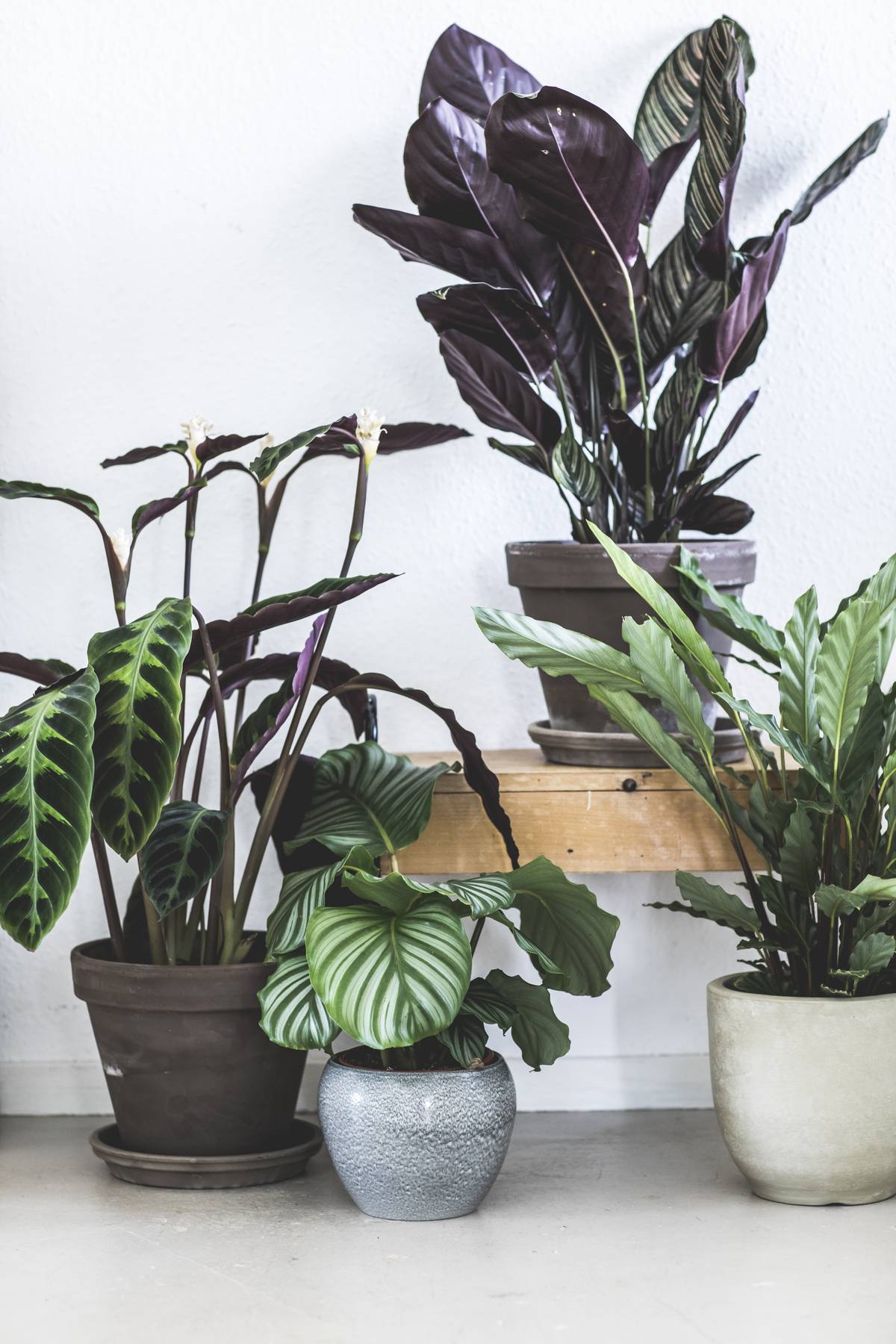
Calathea symbolism
Calathea symbolises new beginnings and rebirth. This meaning comes from the English expression ‘to turn a new leaf’, which is what the plant does when it gets dark (it closes its leaves). Calathea is a lovely gift to someone starting something new, or to yourself as a gift at the start of a new job, new hair or other new beginning.
The gentle movements of the leaves and their calming patterns make the Calathea the symbol of calm and peace. The plant can help create a serene and relaxed feeling and for a calm atmosphere in your home. Try this mindfulness experience with plants to see what we mean.
Calathea origins
The Calathea is native to Brazil and surrounding countries in the Amazon region, such as Peru, Colombia and Costa Rica. There, Calathea lives in the shade under the dense foliage in the tropical rainforest - hence why its so happy in a shady corner or your home or a steamy bathroom.
Calatheas were first discovered by European botanists and explorers in the 18th and 19th centuries. With their striking leaf markings, the plant immediately attracted attention. Soon the plants were brought to Europe and grown in botanical gardens in the Netherlands, France and the UK. There, facilities such as greenhouses were available to mimic the tropical conditions needed for healthy, beautiful growth.
Over the years, more and more varieties were developed that could better withstand indoor conditions. Today, Calatheas are popular houseplants throughout Europe. This mainly because of their beautiful leaves and soothing appearance.
